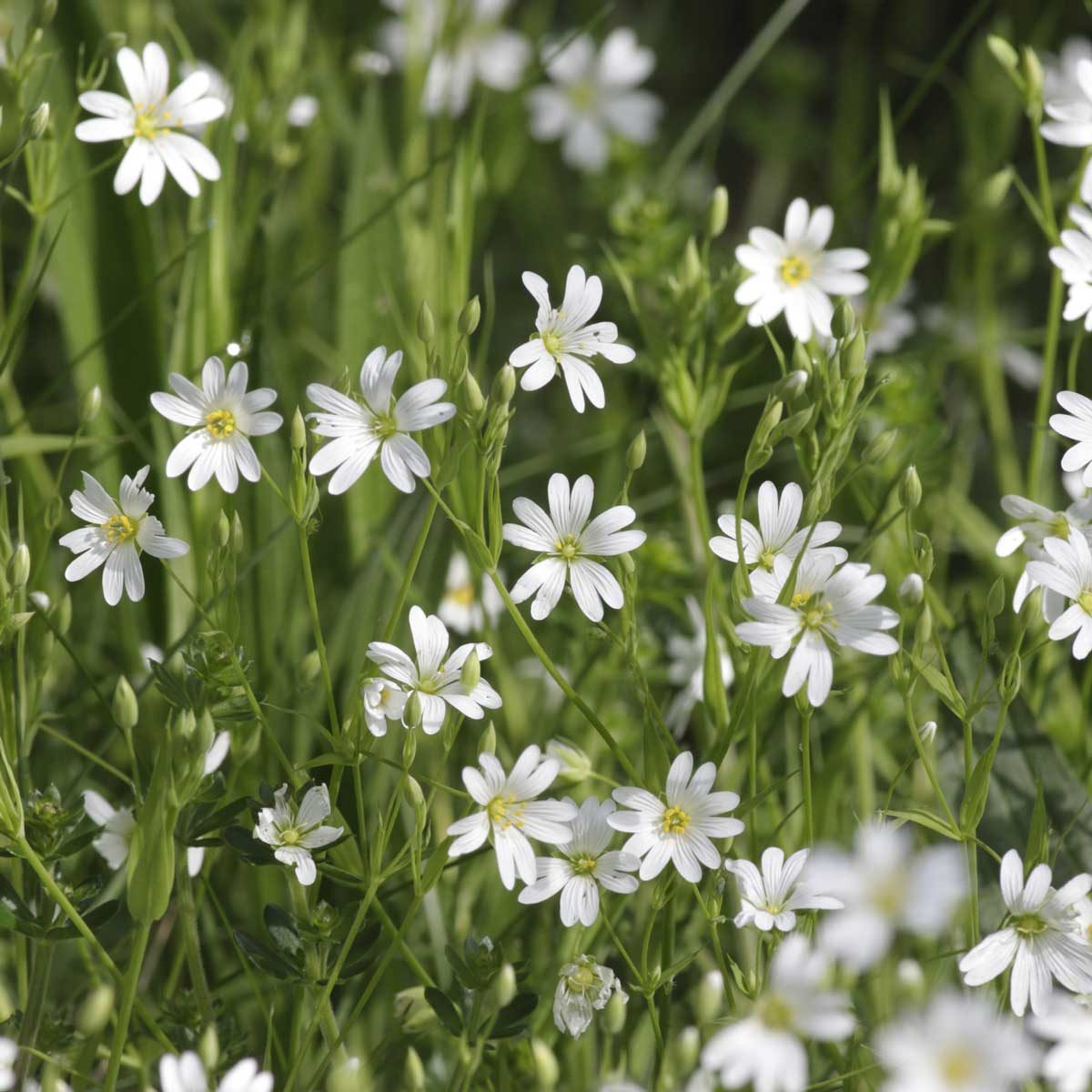One of the most ubiquitous types of weeds found in grass is common chickweed. It's a nuisance, but getting rid of it is easy!

How to Identify and Control Common Chickweed

Common chickweed is so adaptable that it can be found in all 48 lower states. Many homeowners want to know how to get rid of this grass and garden weed. Here’s what you need to know about chickweed, how to get rid of it and how to make use of it.
On This Page
What Is Common Chickweed?
There are two types of chickweed: common and Mouseear.
Common chickweed is an annual weed, living for only one year. It emerges in mid-to-late summer and completes its life cycle the following spring. Before it dies, each plant produces thousands of seeds that will germinate later that summer. This starts the cycle over again, perpetuating your frustration.
Its cousin, Mouseear chickweed, is a perennial, meaning the same weed continues to grow year after year. If ignored, it will continue reseeding itself, producing “offspring” that will help it spread. It can also produce new roots at each node (the point where the leaf meets the stem) when the stem meets bare soil. It is lower growing than common chickweed, which makes it more of a challenge to remove by hand.
How to Identify Chickweed in Your Lawn or Garden
Chickweed identification is fairly easy—Common chickweed forms small mounds in your lawn about three to eight inches in diameter. It forms small, delicate, daisy-like, white-to-pink flowers in the spring. The leaves are shiny and oblong with a point at the end.
Mouseear chickweed can be distinguished from its cousin by its elliptical, dark-green, hairy leaves. The leaf hairs also make it feel sticky. It grows in dense, compact patches and produces small white flowers with five petals.
Why do lawns get chickweed?
Damp soil will encourage the growth of common and mouse-ear chickweed, so watch your watering practices. Dial back your irrigation if chickweed appears. Common chickweed is often found in shaded areas, especially around tree mulch skirts.
Mouse-ear chickweed can be found in shady and sunny areas. Like all weeds, Mouse-ear chickweed will quickly invade thin, malnourished grass, so keeping your lawn healthy, thick and vigorously growing is a must. Don’t mow too low. This stresses your lawn and gives weeds an invitation to visit!
Best Methods for Removing Common Chickweed
The University of California Integrated Pest Management Program (UC IPM) says that in order to prevent seed build-up in the soil, the best time to get rid of chickweed is before it flowers. UC IPM recommends trying non-chemical control methods since there’s no easier weed to pull by hand than common chickweed. It is a bunch-type weed with a shallow root system that begs to be pulled.
Tip: Take care to dispose of chickweed when hand weeding, for it can reroot from stem nodes.
As an annual weed, it can also be controlled by a pre-emergent herbicide product in late summer before it sprouts. For those who prefer more natural weed control, corn gluten meal, sold at many garden centers, can also be applied in late summer.
Traditional broadleaf herbicides will also do the trick when applied as weeds are actively growing. It cleans up a broad spectrum of other broadleaf weeds, too.
Note: Be sure you follow the labeled rates when using all herbicide products.
Because Mouseear chickweed is a perennial weed, a broadleaf herbicide will yield the best results. Horticultural vinegar provides a natural solution.
Removing Mouseear chickweed by hand is difficult because it is dense and low-growing. However, like common chickweed, it has a shallow root system so it may be worth a try. Try digging it out with a spade if you have pent-up energy to burn.
Preventing Chickweed from Returning
A single common chickweed plant can produce 800 seeds or more, which can then remain in your soil for up to a decade, according to Clemson Cooperative Extension. To prevent these dormant seeds from sprouting plants and marring your landscape, limit watering and raise your mowing height in the fall. These weeds thrive in moist conditions and short lawns. In gardens or flower beds, mulch can be an effective method of preventing chickweed.
FAQ
What is the importance of chickweed?
Chickweed leaves contain flavonols like quercetin and rutin, as well as small amounts of vitamin C. Traditionally, chickweed has been used to help manage conditions such as diabetes, high cholesterol, and obesity. However, there is limited scientific proof to back these claims.
Sources
- Clemson Cooperative Extension: “Common Chickweed (Stellaria media) | Home & Garden Information Center”
- Edible Wild Food: “Buttered Chickweed Recipe”
- Beyond Pesticides: “Chickweed – ManageSafe™”
- Clemson Cooperative Extension: “Managing Weeds in Warm Season Lawns”
- University of California Integrated Pest Management Program (UC IPM): “Chickweeds Management Guidelines”
- University of California Integrated Pest Management Program (UC IPM): “Common chickweed”




















